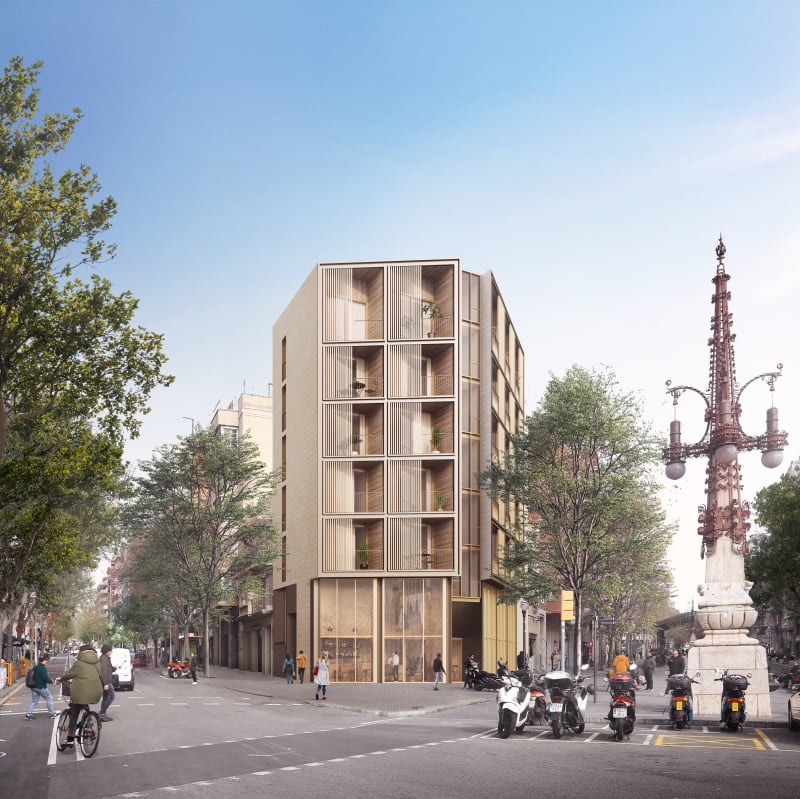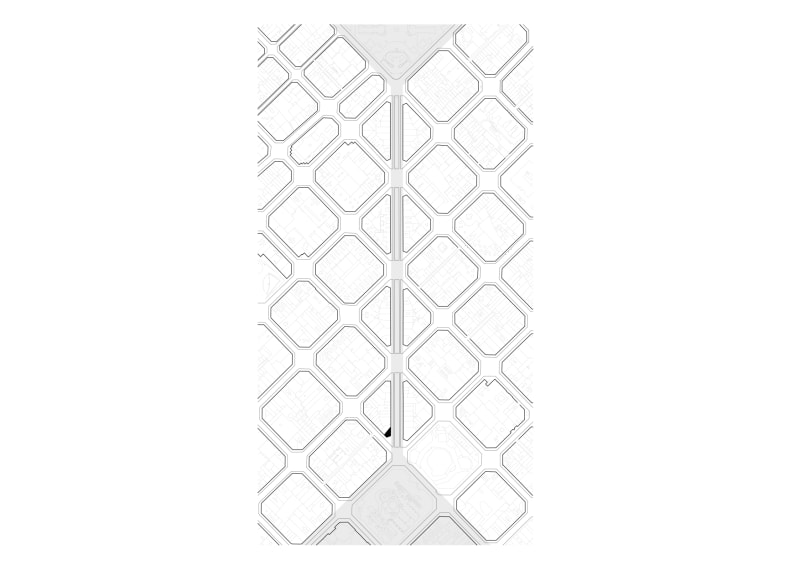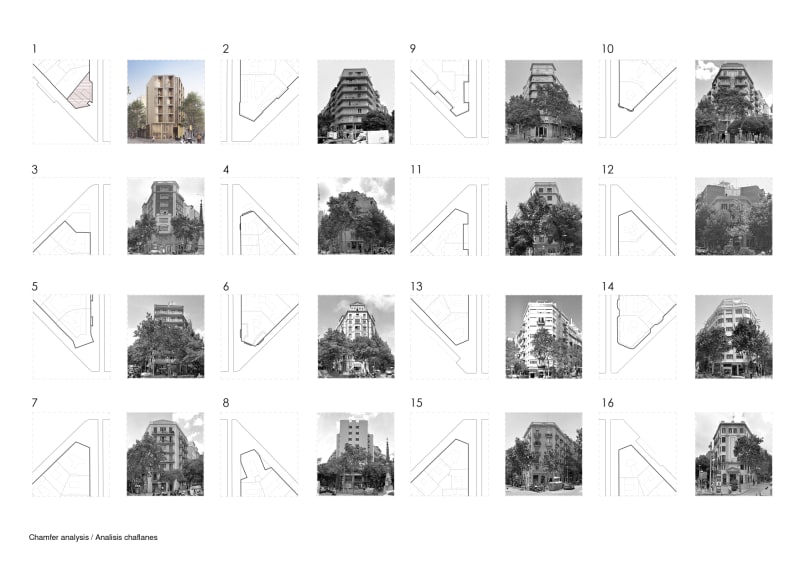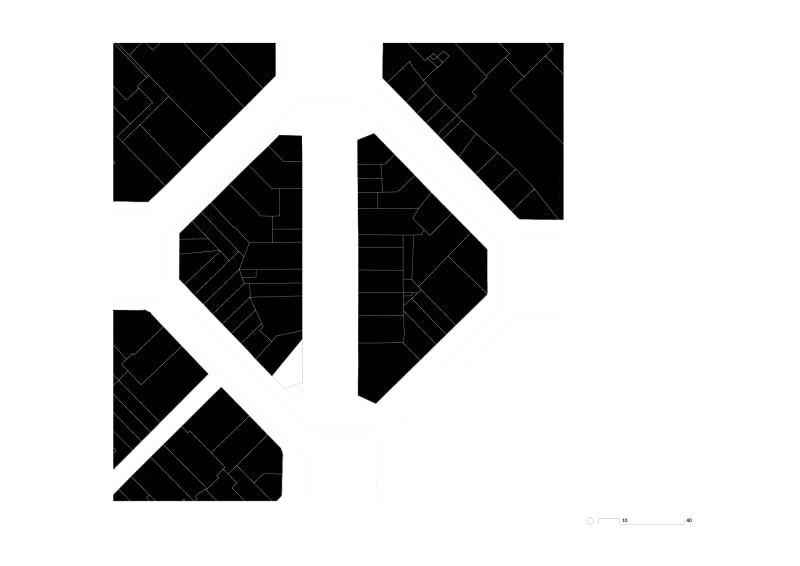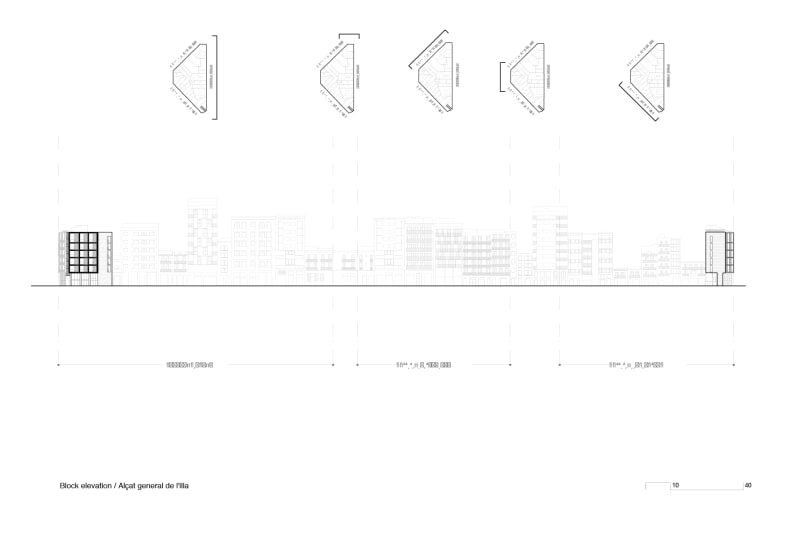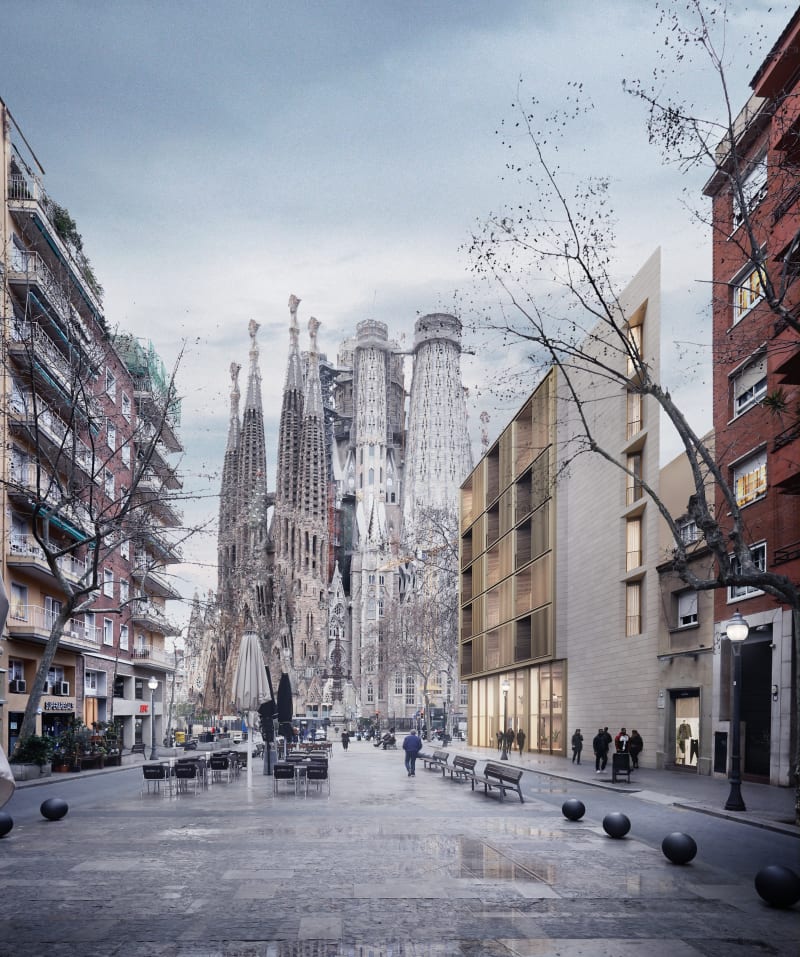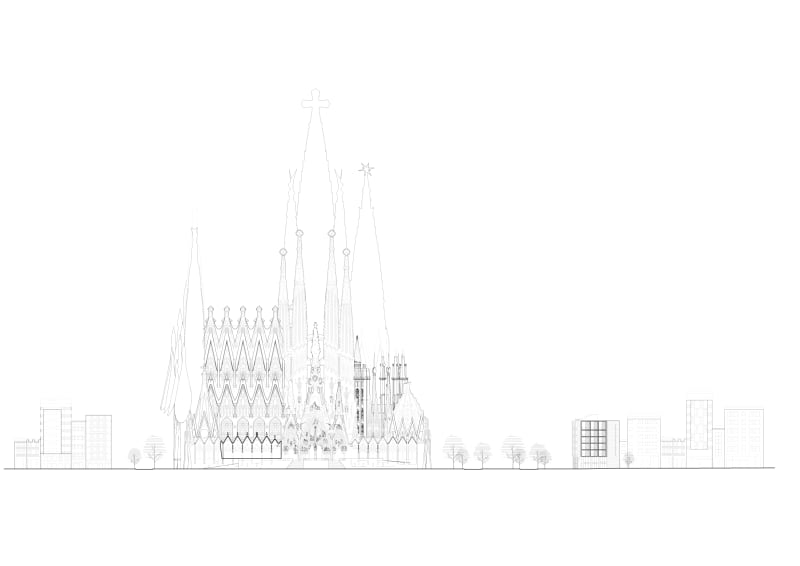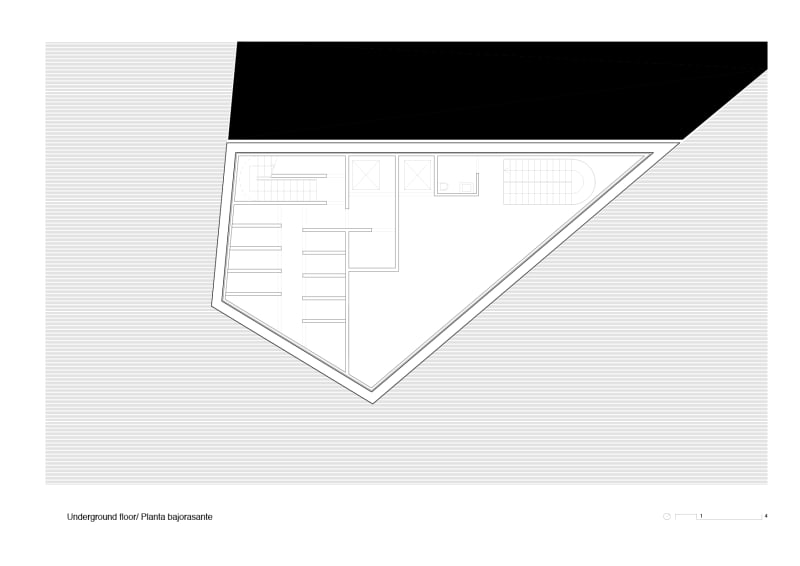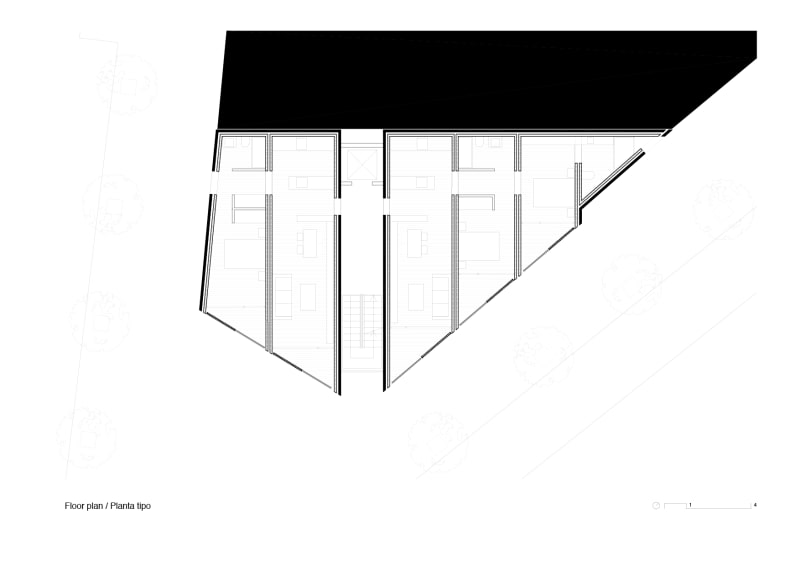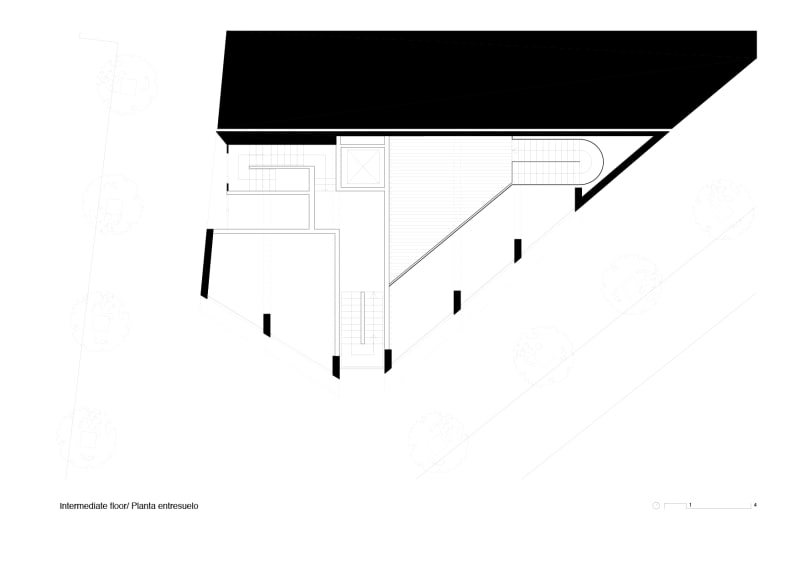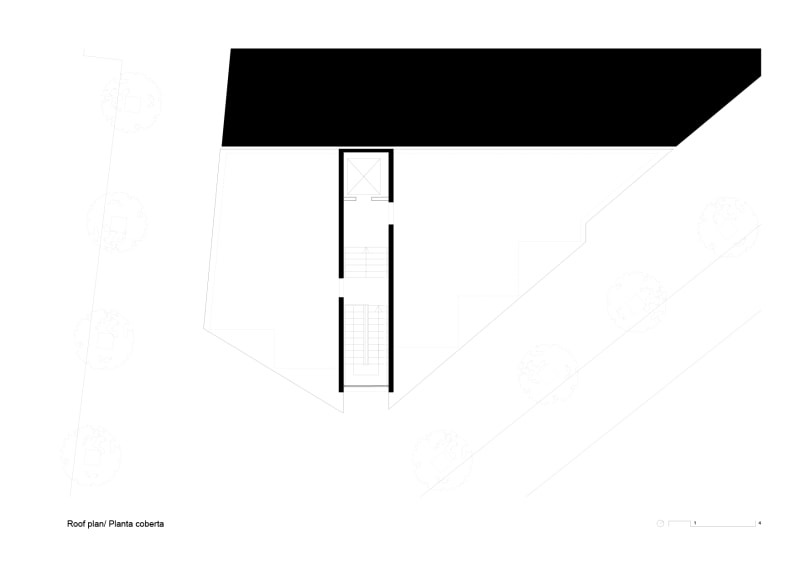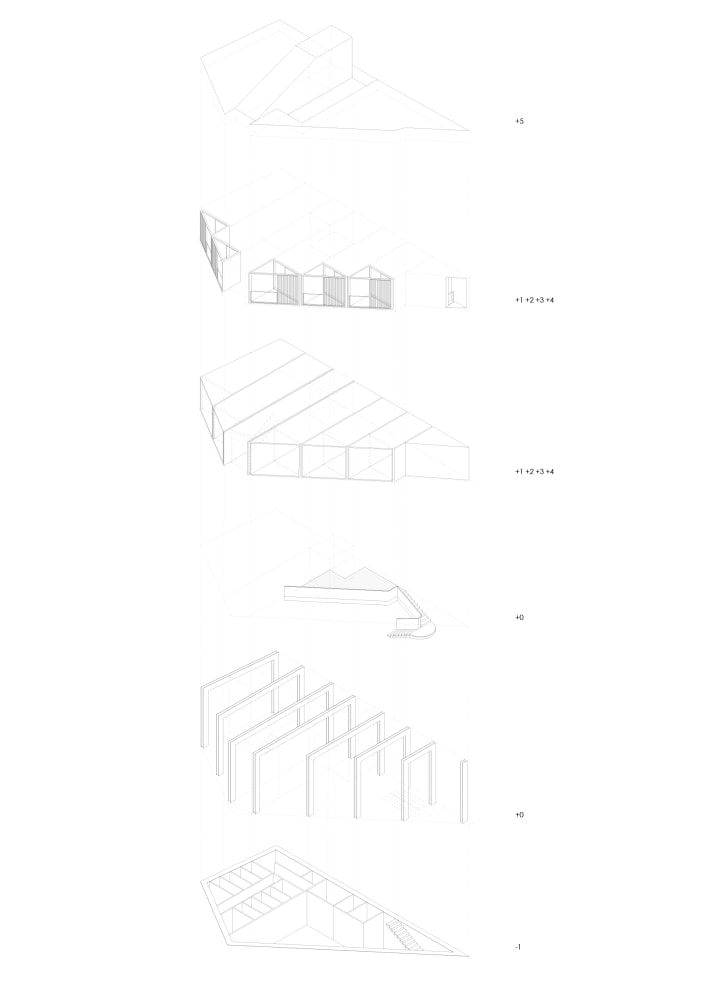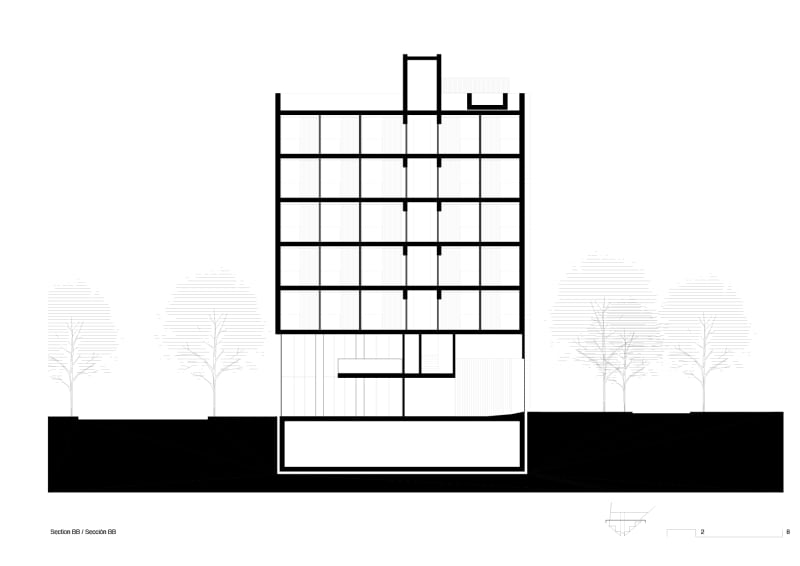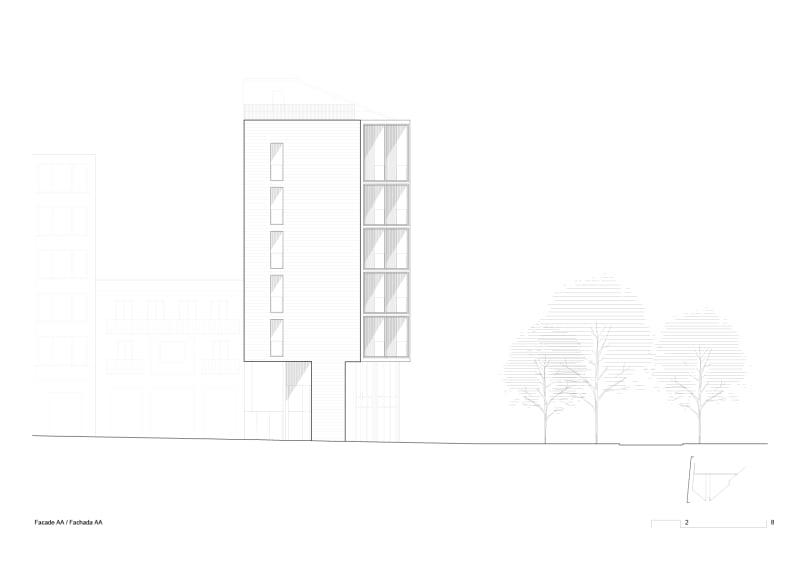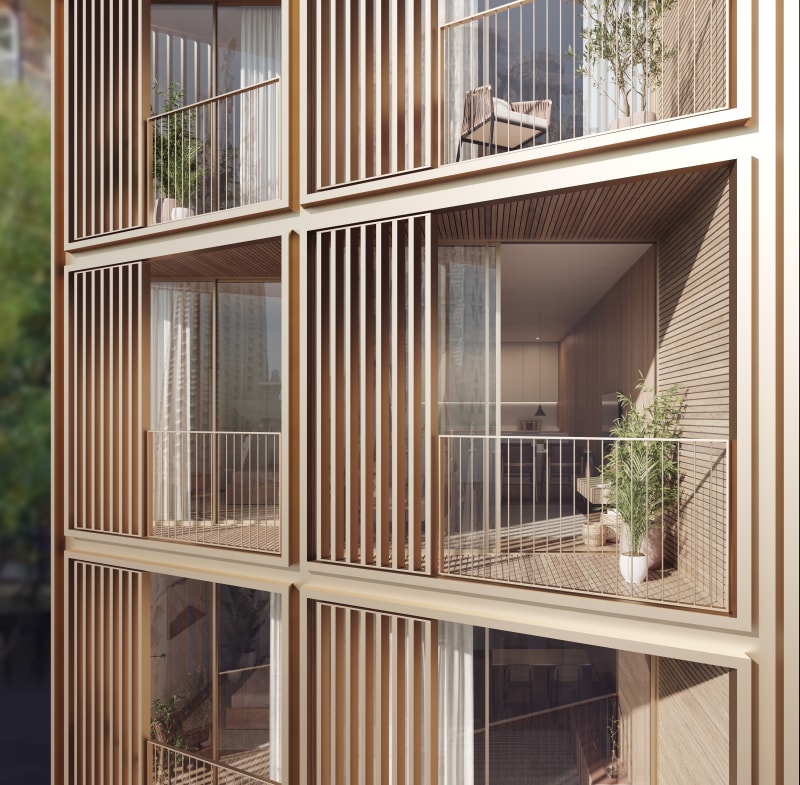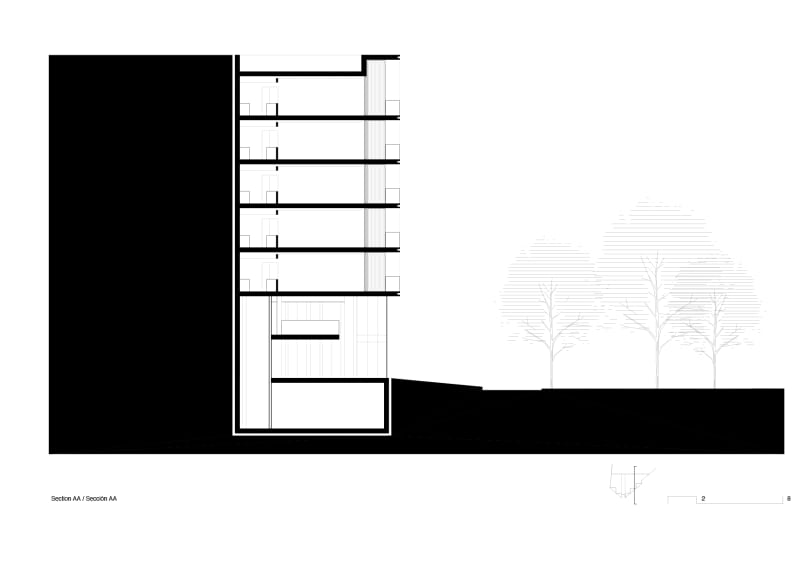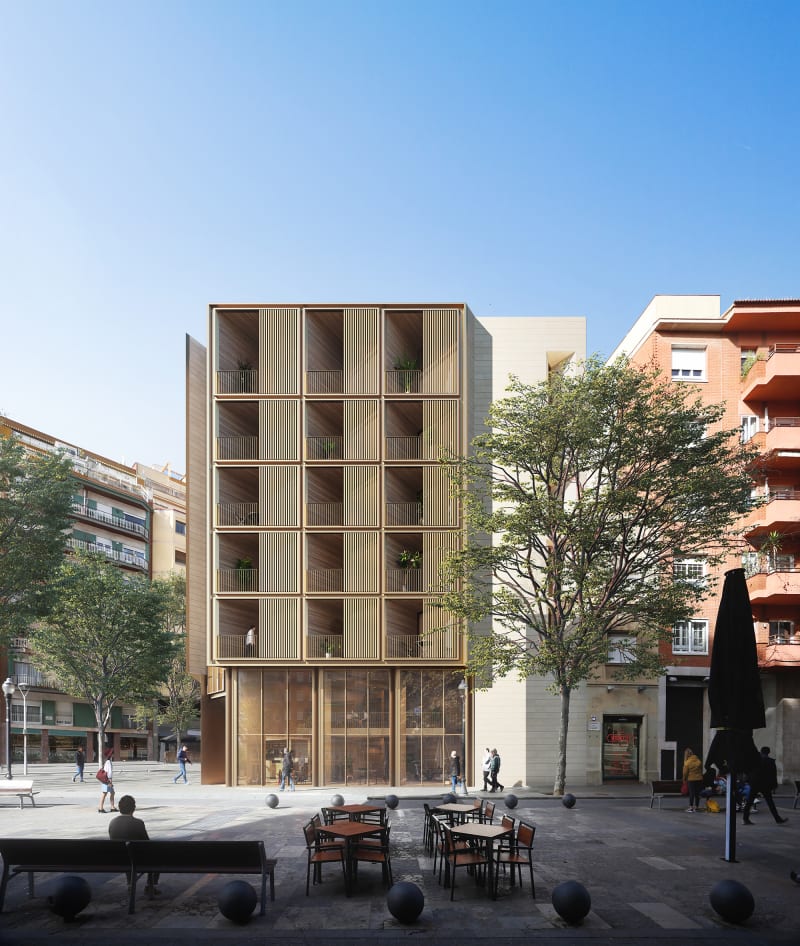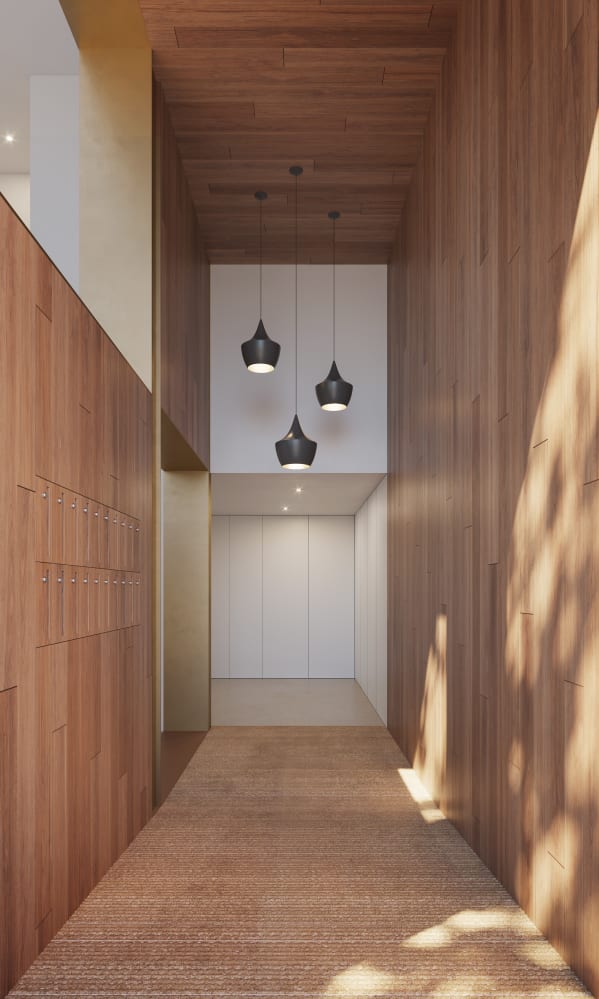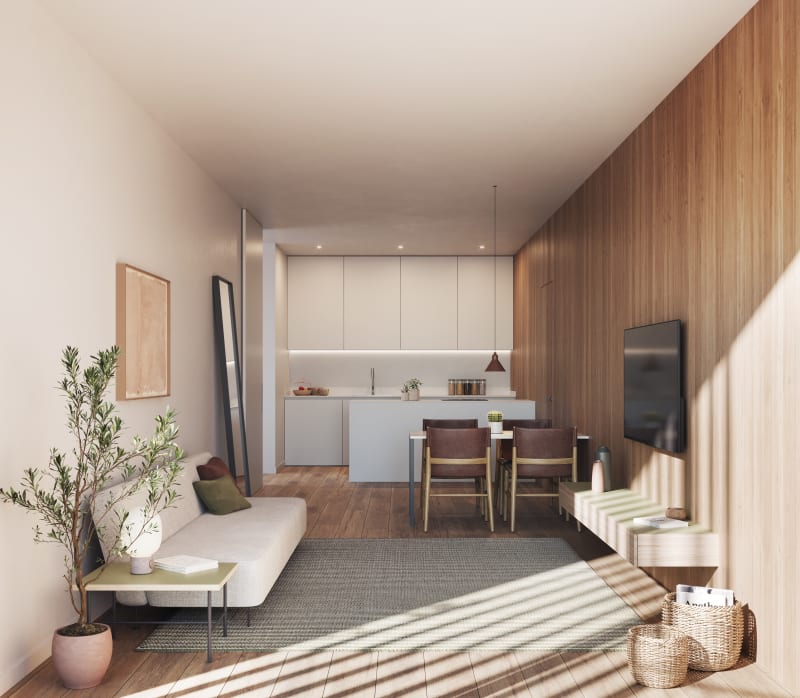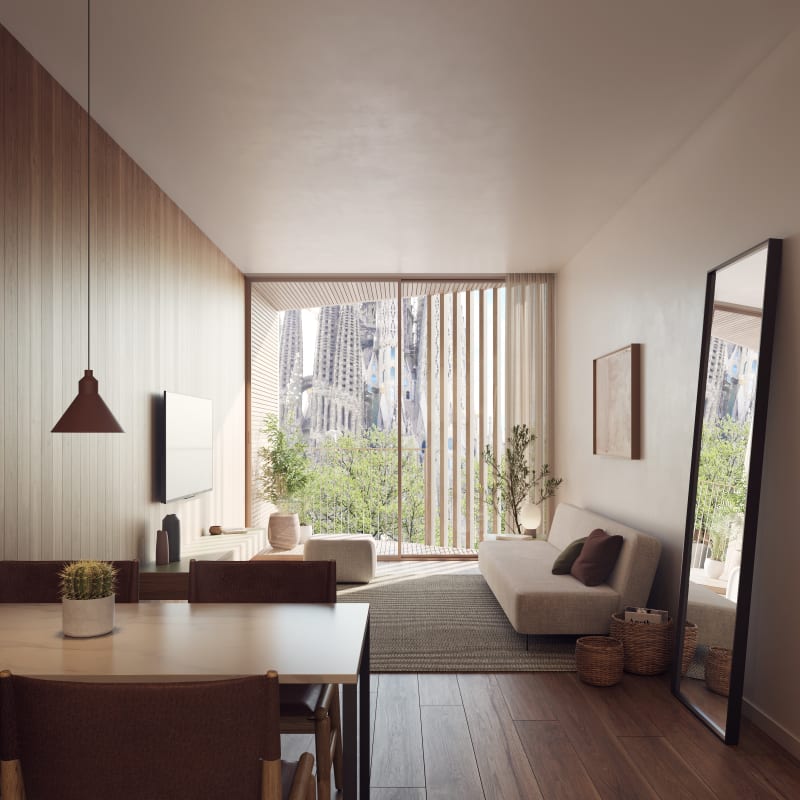The plot is located in the heart of Barcelona, specifically at number one of Avenida Gaudí, the closest chamfer to the Sagrada Familia.
Avenida Gaudí was originally conceived by the French architect and urban planner León Jaussely in 1907, with the idea of connecting the Sagrada Familia temple with the Hospital de Sant Pau, offering one of the most characteristic visuals proposed by Gaudí for the temple.
Its layout is made by dividing four blocks of the Eixample on the diagonal, thus resulting in eight half-triangular blocks with their corresponding sixteen chamfers.
These chamfers are characterized in that two of their main facades form a 45-degree angle, the one of Avenida Gaudí, with the one of the intersecting street, and in turn linked by a facade on the chamfer perpendicular to the bisector. As a result, these chamfers have a completely symmetrical floor plan except for the one in question, which surely has another way of expanding the view of the Sagrada Familia.
Our proposal starts from the orthogonal geometry to the party wall that gives rise to five modules: two for living room-kitchen and three for bedrooms, each with its triangular terrace. Furthermore, this geometry allows us to orient the windows of Avenida Gaudí to look for the visuals of the temple.
The composition of the facades arises as a direct consequence of the plan modulation and its triangular terraces.
In terms of materiality, a bronze-colored metallic grid that frames the terraces and contains railings and lattices, along with a few natural limestone panels in horizontal modulation, referring to the characteristic cushions of the “Noucentista” buildings in the Eixample.
This modulation allows us to consider the possibility of an industrialized construction, entailing a shorter execution time of the work, minimizing the inconvenience in a highly visited environment.

